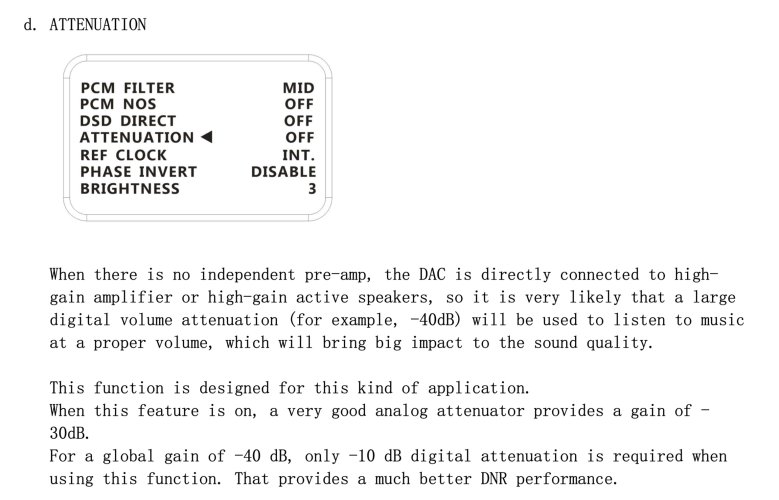SpursForEver
Head-Fier
Just make a voltage splitter with two resistors.
My Hypex Nilai power amp has three gain settings (output signal gain measured in dB) which I think is what you’re referring, a good point you make. The low gain setting minimises attenuation needed in my system (in my case via my preamp rather than a digital volume control) whilst still being loud enough, which to my ear sounds the best and is coincidentally the setting with the highest measured performance on another forum.Depending on the design of the amplifier, it can also go so far that you can always adjust the volume within an audible range without blowing up the headphones or going deaf because it is constantly too loud.
I picked up and connected the Gustard R26 today. Since it’s a second-hand device, there’s no need for a break-in period. My first impression is that the 2in1 streamer + DAC performs well, but it feels a bit 'raw' in my setup. Later on, I tried connecting my current digital setup Rpi4 with Volumio (IanCanada upgrade) - Musician Pisces II DDC - G-R26, while simultaneously using the G-R26 as both DAC and streamer. I noticed that the external DAC + DDC combination produced a more refined and detailed sound compared to the 2in1 setup, especially in the bass spectrum, which felt less defined and affected the other frequency ranges in the 2in1 configuration and front/rear scene.
Excuse for my ignorance, so how do I get into analogue attenuation setting? Or it is automatic? so I don't need to do anything?Cool, glad to help.
The analogue attenuation is aimed at users with power amps and so no ability to adjust the amp volume in analogue domain (ie as you would via a preamp or integrated amp or headphone amp) so have to do it all via the DAC digital volume. If they find that comfortable listening levels are only with -40dB digital volume set on the R26 that will have a negative effect on sound with reduced dynamic range (DNR)* so better to do 30dB of the cut via the analogue attenuation setting, limiting the digital attenuation needed (to get to the same overall attenuation of -40dB) to 10dB which will sound better, no loss of DNR.
*DNR reduces perceptibly when there’s high attenuation like this due to the design of simple digital volume controls like the one in the R26 due to loss of bits. More sophisticated digital volume controls like those in software like Roon or HQplayer or as implemented in some DACs and streamers do additional processing to ensure there are bits to spare so DNR is not impacted. Google or search HF threads for digital vs analogue volume control for much discussion and debate on this topic!

I have been playing with it following your instruction, I still don't know the logic of it, but I managed to raise the volume by a lot, but still it's either too loud or too low. Going to play with it again this weekend and see if I could set the right "range" of attenuation . BTW, here did you find all these information? it's not in the manual for sure. Thank you.@Turbo2288 Here’s what I would do if I wanted to use the R26 remote control as the primary vol control for your system*, having both the R26 and Nilai:
- turn R26 volume right down using the remote to a safe level (eg. -50)
- set R26 Attenuation to OFF in the menu (this is the one step -30dB analogue attenuation I refer), clearly ON is too much attenuation in your system
- with Attenuation OFF find your comfortable R26 listening volume range (values) from quiet - normal - loudest you’d listen
- if normal listening volume is -12 to 0 (ideally -10 or less) in the R26 screen, and you can get a max volume that’s satisfactorily loud enough for you, you’re good
- if still too quiet or if too loud (so needs too much R26 digital attenuation for normal levels which will impact dynamics) then I’d try some alternate gain settings on your Nilai, set via the jumper switches on the circuit board. All Nilai have this. Yours is most likely set to the factory default of medium (22dB gain). As I mentioned mine is set to low gain (12dB) which is the best fit in my system.
Good luck and let us know how you get on!
*alternative and probably better sounding approach is to set R26 to fixed and use a more sophisticated digital volume in a music streaming app like Roon or JPLAY for iOS.
Nilai gain instructions
Three levels of gain (12, 22 and 28 dB) for both the stereo and mono amps.
https://www.diyclassd.com/media/09/22/53/1680596548/User Instructions Nilai500DIY Stereo kit.pdf


